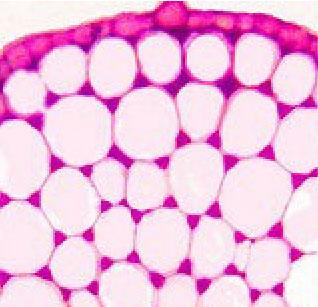
|
| Collencyma Cell |
Collenchyma cell have thicker
primary walls than parenchyma cell, though the walls are unevenly thickened. Young stems and petioles often have strands of
collenchyma cells just below their epidermis. Collenchyma cells lack secondary walls, and the hardening agent lignin is absent
in their primary walls. Therefore, they provide flexible support without restraining growth. At functional maturity, collenchyma
cells are living and flexible, elongating with the stems and leaves they support. Grouped in strands or cylinders, collenchyma
cells help support young parts of the plant shoot. Different types in collenchyma cells are classified according to the arrangement
of the wall thickenings.
|

